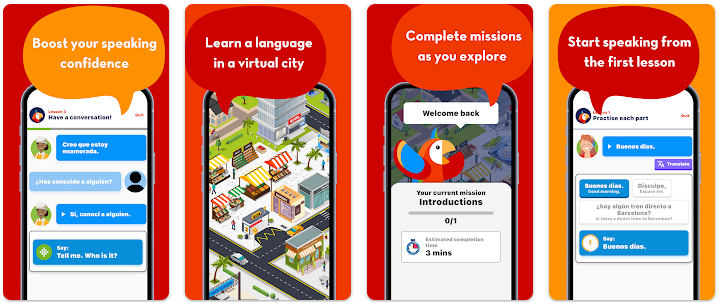Are You Stuck?
How to Make Your Phone Your Best English Friend
Do you ever feel like your English is stuck in the middle?
You can understand a lot, but when you try to speak, your mind goes blank. You’ve learned all the grammar rules, but you still don’t feel confident.
I hear this from intermediate learners all the time, and it’s a completely normal part of the language learning journey.
This week, we’re going to talk about something you use every single day: your mobile phone.
We often see our phones as a distraction—and they can be!
But what if you could turn that powerful device in your pocket into a tool to help you finally become fluent?
Let’s explore the good and the bad of mobile phone use for English learners, and then I’ll show you an app that could change the way you practice forever.
The Problem: Distraction and “Passive” Learning
First, let’s be honest about the negative side of our mobile phone habits.
We’ve all been there: you open an app to study English for 10 minutes, and suddenly, an hour has passed and you’ve been watching cat videos on YouTube or scrolling through social media.
This constant influx of notifications and digital entertainment can seriously reduce your attention span and make it hard to focus on deep, concentrated learning.
Another problem is what I call “passive” learning.
You might spend hours watching English-language TV shows or listening to podcasts, which is fantastic for your listening skills.
But without active practice—speaking, writing, and creating—you can’t move from understanding to fluency.
It’s like watching a sport on TV without ever playing it yourself. You might know all the rules, but you can’t score a goal.
So, how can we change this dynamic?
The Solution: Make Your Phone an Active Learning Partner
The key is to switch from being a passive consumer of content to an active creator and participant.
Your phone is a perfect tool for this because it’s always with you.
Here are some ways to use your phone for active English practice:
Become a reporter: Use your phone’s camera and microphone to describe your day. Take a photo of your breakfast and record a short voice note describing what you’re eating and how it tastes. This forces you to use real-world vocabulary and practice your pronunciation.
Create a vocabulary notebook: Use a notes app to write down new words and phrases you hear. Instead of just writing a definition, try to write a sentence using the new word. This helps you remember it in context.
Record yourself speaking: This might feel strange at first, but it’s one of the most effective ways to improve your spoken English. Record yourself talking about a topic for one minute. When you listen back, you can identify areas where you hesitate or need to improve your pronunciation.
These are great strategies, but what if you don’t have a friend or a teacher to talk to?
What if you want real-time feedback and a structured way to practice conversations?
This is where a new generation of apps comes in, and I want to tell you about one in particular: Golingo.
My Recommendation: The Golingo App
I’ve tried many different language-learning apps, but most of them focus on vocabulary quizzes or grammar drills. While those are helpful, they don’t give you what you really need to reach fluency: confidence in real-life conversation.
Golingo is different because it’s built around one core idea: learning through conversation. It’s like having a friendly, patient conversation partner available 24/7.
Here’s why I think Golingo is perfect for intermediate learners who feel stuck:
AI-Powered Conversation: Golingo uses AI to create realistic, simulated conversations. You’re not just repeating phrases; you’re interacting in a virtual world. You can visit different locations and scenarios, like a cafe or a shop, and have a conversation. This gives you a chance to practice in real-world contexts without the fear of making mistakes in front of a real person.
Focus on Speaking and Pronunciation: Unlike other apps that focus on reading and writing, Golingo’s primary goal is to get you speaking. The app provides real-time feedback on your pronunciation, helping you to sound more natural and confident.
Bite-Sized Lessons: The lessons are short and focused, so you can easily fit them into your busy schedule. You can practice for just 5 or 10 minutes a day while you’re on the bus, waiting for a friend, or during a coffee break. This consistency is what leads to real progress.
Ready to Make Your Phone Work for You?
Your phone doesn’t have to be a source of distraction.
It can be a powerful tool for your language learning journey.
By being more intentional about how you use it, you can turn those small moments throughout your day into meaningful practice sessions.
If you’re ready to move past the “stuck” feeling and start speaking with confidence, I highly recommend you check out Golingo. It might just be the speaking partner you’ve been missing.




